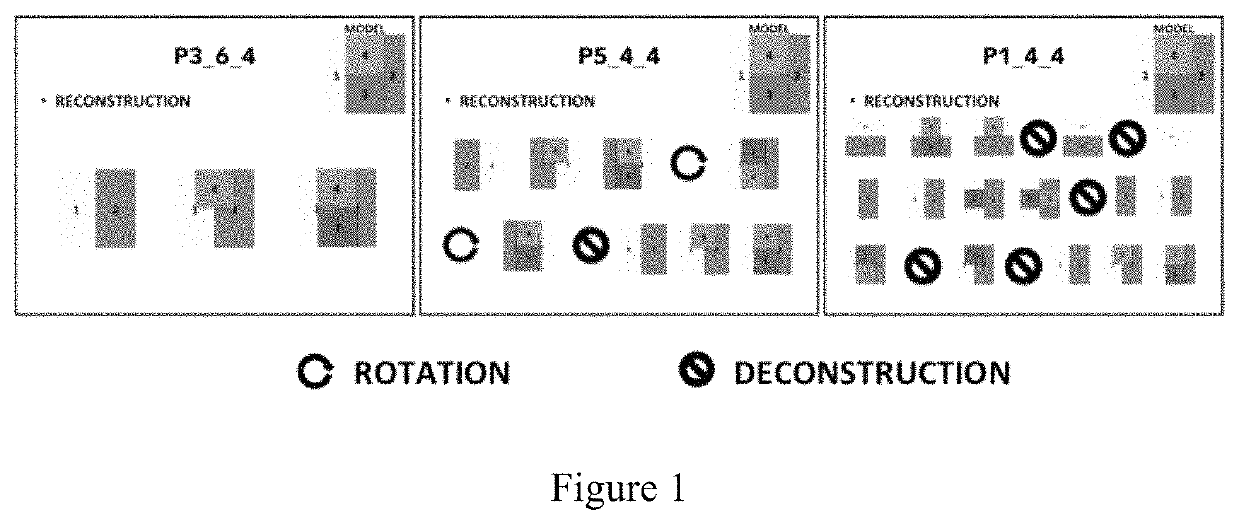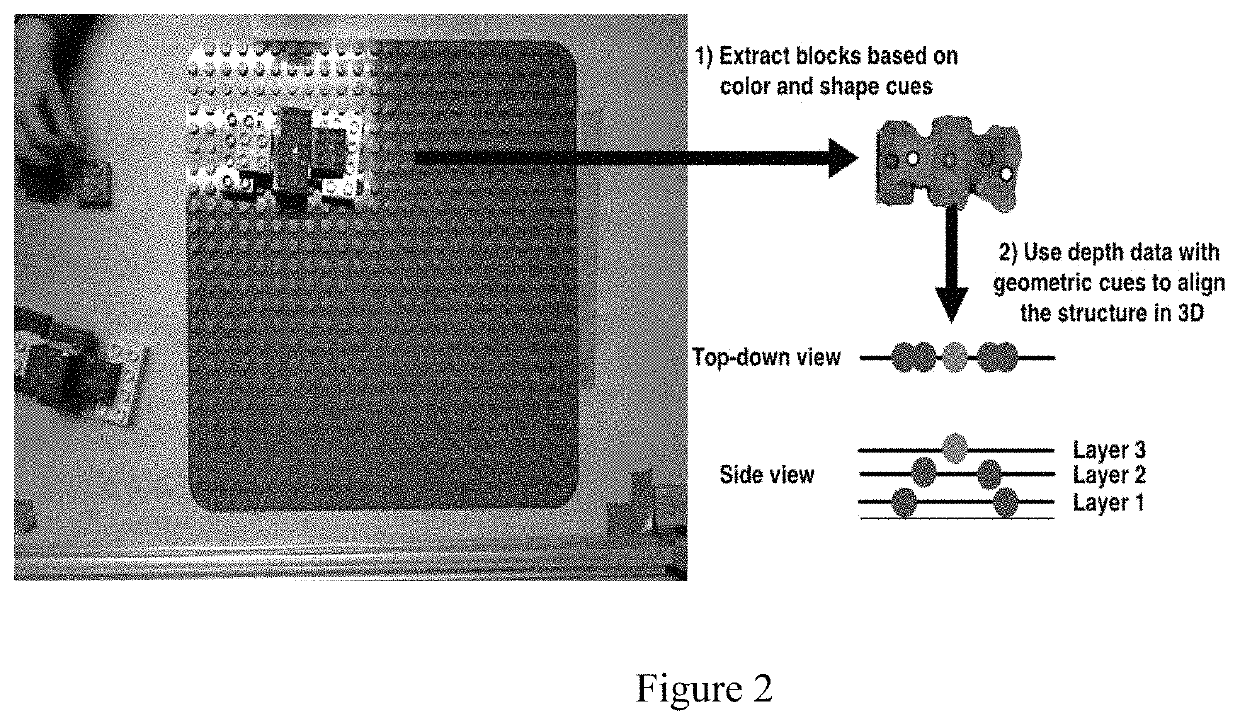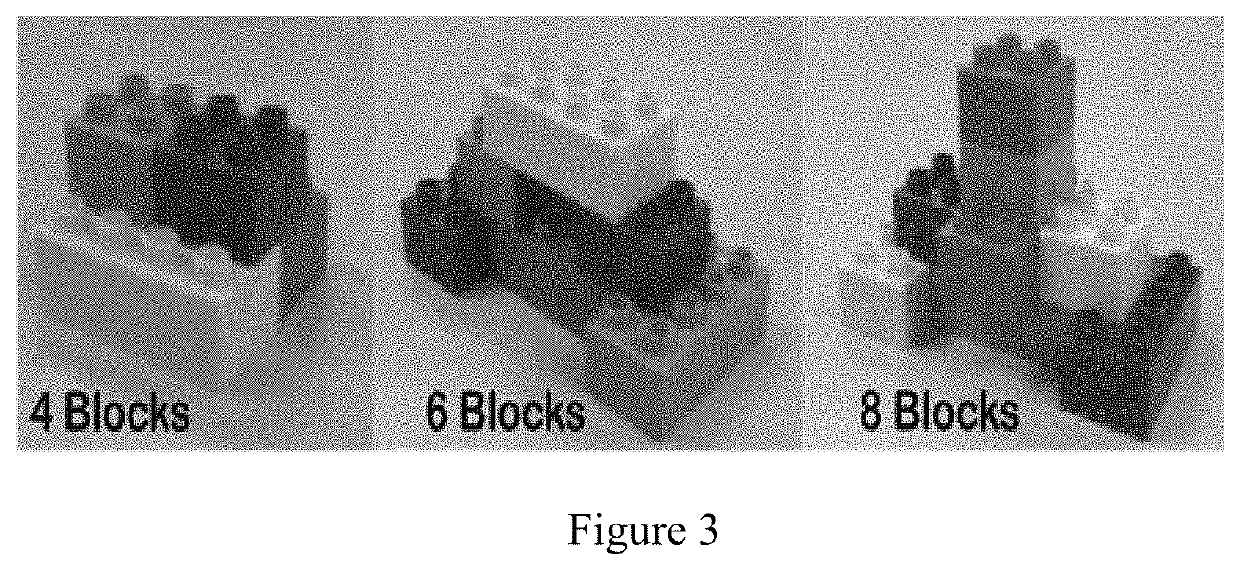Automated system for measurement of spatial-cognitive abilities
a technology of spatial cognition and automatic system, applied in the field of automatic system for measuring spatial cognition abilities, can solve the problems of limited development of methods to precisely quantify their nature and the remarkably complex construction of blocks
- Summary
- Abstract
- Description
- Claims
- Application Information
AI Technical Summary
Benefits of technology
Problems solved by technology
Method used
Image
Examples
example 1
Measurement of Spatial Cognitive Ability Using Blocks
[0030]Children who are “expert” (i.e. highly skilled) builders will sometimes start a construction from the top and other times build the base first, but they get to the end-goal quickly and efficiently, constructing important sub-parts with few moves. By contrast, children who are “novice” (or unskilled) builders may also start at the top or bottom, but they are likely to create more sub-structures and make more placement errors than experts; they also completely take apart their structures once they see an error, rather than simply repairing one or two offending blocks. Although both the expert and the novice may end up with an accurate copy, the steps they take in carrying out the building process are remarkably different, reflecting differences in the sub-units that are constructed, the sequences that lead to global composition, and error-correction. Eleven children (ages 4, 6, and 8 years) complete a series of block construct...
example 2
Automated System for Measurement of Spatial-Cognitive Abilities Using Blocks Participants
[0033]Participants will include 120 children aged 4, 6, and 8 years old (40 children at each age). Given that this is uncharted territory, the inventors chose to use these numbers based on a balance between the practicalities associated with testing young children and extensive work on spatial skills and individual differences in the Shelton and Landau labs. These numbers should allow sufficient power (1-≥0.80) to see moderate to large effects within age and small effects across age and over the entire sample. Recruiting will be done through both labs, which have established participant populations from parent listservs as well as local pre-schools and schools.
Procedures
[0034]Each child will participate in 2 1-1.5 hour sessions that include the primary block-building task, as well as a short battery of tests and inventories designed to gather data on spatial and math skills as well as children's...
example 3
Interventions to Improve Block-Building
[0048]One embodiment of the present invention is to use interventions based on the insights from Example 2 to move children forward along the novice-expert continuum. In essence, take the top 10% of block builders at each age from Example 2, and create a set of instructions based on their most frequent solution paths for each block model, as discovered through the machine-coding data. These instructions will be used to train child participants over a 5-day period, after which the children will be post-tested on their ability to complete the original 6 models plus 3 new models of the same size and complexity of the original ones. The “expert” strategies may be used by non-experts to improve their performance.
Participants
[0049]The inventors will test 80 children, including 40 4 year-olds and 40 6 year-olds who have block-building performance at or below the 50th percentile within age group as established by the composite scores in Example 2. The ...
PUM
 Login to View More
Login to View More Abstract
Description
Claims
Application Information
 Login to View More
Login to View More - R&D
- Intellectual Property
- Life Sciences
- Materials
- Tech Scout
- Unparalleled Data Quality
- Higher Quality Content
- 60% Fewer Hallucinations
Browse by: Latest US Patents, China's latest patents, Technical Efficacy Thesaurus, Application Domain, Technology Topic, Popular Technical Reports.
© 2025 PatSnap. All rights reserved.Legal|Privacy policy|Modern Slavery Act Transparency Statement|Sitemap|About US| Contact US: help@patsnap.com



